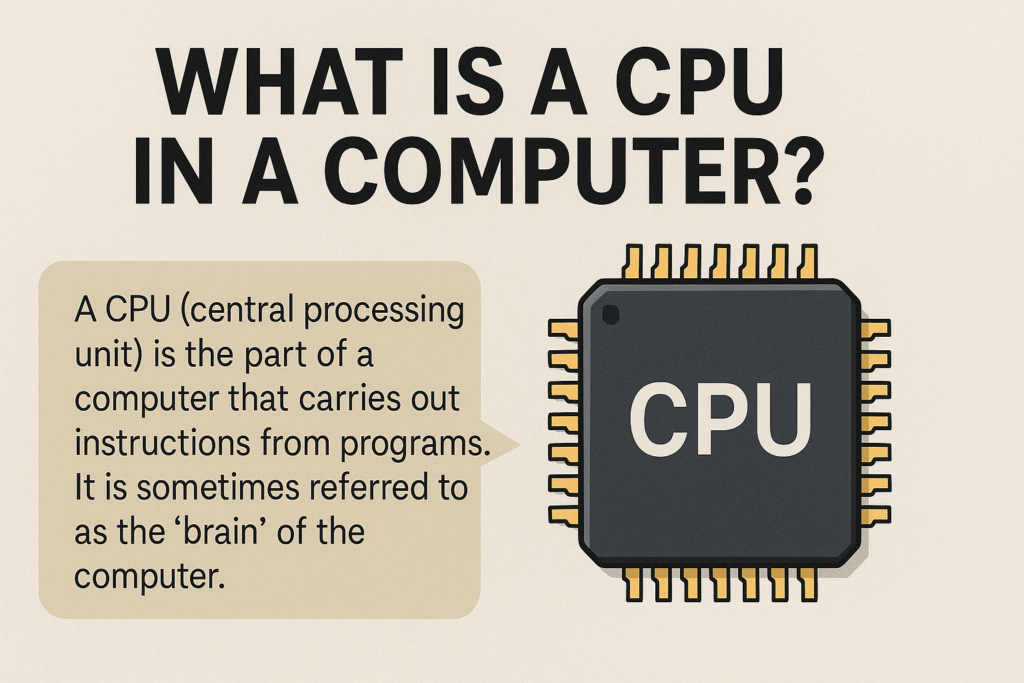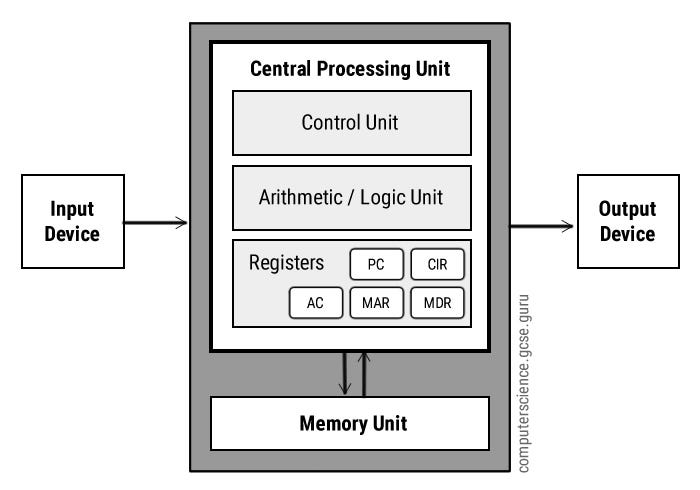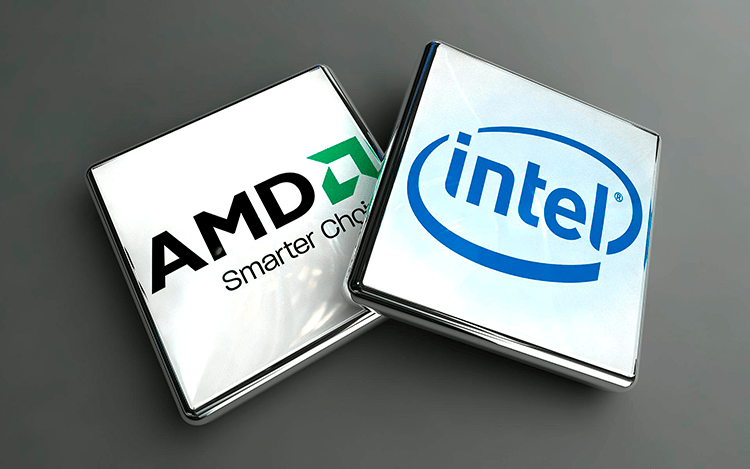
What Is CPU in a Computer? A Beginner-Friendly Guide
Just in case: Anyone ever wonder, “What is CPU in a computer, and why do I even care about it in my desktop?” —you’re not alone. The CPU is commonly known as the “brain” of your PC, but what does that actually mean?
In this blog post, we’ll post it all here in easy to digest terms and no jargon-filled tech stuff, just straight up explanations. Whether you’re looking to buy a new laptop, or you’re just curious about how computers work, this guide will explain what the CPU is, what it does, and why it matters.
What Does CPU Stand For?
CPU = Primer is the abbreviation of Central Processing Unit. It’s the primary chip in your computer that does most of the computing. In layman terms, it’s the part that processes and executes the instructions given by the computer’s hardware and software.
So when you boot up a web browser, search in Word or play a game —— it’s your CPU that’s doing the heavy lifting.
What Does the CPU Do on Your Computer?
Imagine your computer as a group of people each working on a project. You have storage (your hard drive), memory (RAM), and input-output devices like your keyboard, mouse and display. But the CPU is like the team leader — it takes orders, assigns tasks, calculates and makes sure everything is going as planned and in sync.
Here’s what the CPU does, in day-to-day operation:
- Processes Data: Raw data collected through software is processed before output is received.
- Follows Instructions: For each click, keystroke, and action executed, instructions are called upon, which the CPU processes and fulfills.
- Controls Other Parts: It talks to memory, storage and input/output … etc, in order to keep things running.
How Does a CPU Work?
At a macro level, the CPU runs what is referred to as the fetch-decode-execute cycle:
- Fetch: It gets an instruction from your computer’s memory (RAM).
- Decode: This is what it does: it decodes what the instruction is asking for.
- Execute: This is when the instruction actually does something — does a calculation or moves data around.
This whole cycle takes place billions of times a second. Yes, billions!
Key Parts of a CPU
To fully comprehend what the CPU is doing, lets go down to some of its key component.

- ALU (Arithmetic Logic Unit)
This is the section of the CPU that processes mathematical calculations and logical operations. Whether you are adding two numbers or comparing a large batch of data, the ALU is your captain.
- CU (Control Unit)
The control processes control and coordinate data flow to and from the CPU and other devices. It informs the memory, ALU and the input/output device how to behave at instructions
- Registers
Registers are small memory cells within the CPU where frequently used data and instructions are stored for fast access.
Combined, these ingredients make the CPU a strong central processor.
Clock Speed and Cores: What Do They Actually Mean?
So then, if you’ve ever purchased a computer or processor, you know you’ll see things like “3.4 GHz quad-core processor”. What do these mean?
- Clock Speed (GHz)
This is the rate at which the CPU runs through cycles — the faster the better, and you usually measure this in gigahertz (GHz). One gigahertz is one billion cycles per seconds. So a 3.0 GHz microprocessor performs 3 billion instructions each second.
Not only usually are higher clock speeds better, but not only is it the case.
- Cores
The major processor in your computer has multiple cores; they are essentially little CPUs inside the main one. Each core is independent in carrying out its own operations. Dual-core refers to a processor having two cores, quad-core for four and so on.
More cores = stronger multitasking and performance for tasks such as gaming, video editing and 3D rendering.
CPU vs GPU: What’s the Difference?
The CPU and GPU (Graphics Processing Unit) can sometimes be mistaken for one another. Though both serve as processors, their jobs are quite divergent.
- CPU: Responsible for general-purpose tasks, such as running apps, browsing the web and operating the OS.
- GPU: This is what renders images and video. That’s important for gaming, video editing or pretty much anything with graphics.
- Imagine the CPU as the CEO of a company and the GPU as a specialist who makes the things that the CEO dreams up.
How Much Does the CPU Matter in a Desktop?
It is the soul of a computer unit which executes all the components. Here are a few things to which a speedier and beefier CPU can:
Launch applications quicker
Run demanding software more smoothly
Improve gaming experiences
Accelerate work tasks or video editing, programming, and joining meetings.
But the CPU isn’t going it alone. To perform well, it needs to be paired with sufficient RAM, fast SSD and a decent GPU (if it’s a requirement).
Popular CPU Brands and Models
When it comes to purchasing a CPU, there are two main brands ruling the market:

- Intel
Intel’s series of Core i3, i5, i7, and i9 are popular as well. These CPUs are commonly used in laptops and desktops ranging from entry-level computers to high-end gaming machines.
Core i3: Entry-level
Core i5: A solid mid-range (good for most users)
Core i7/i9: Fast and great for creators, gamers and pro users
- AMD
AMD has its Ryzen series (Ryzen 3, 5, 7 and 9) with strong multi-threaded performance that generally comes at lower prices.
Ryzen 3: Budget-friendly
Ryzen 5 — Best value for performance available in x86 right now
Ryzen 7/9: Multitasking and gaming performance, no holds barred
Every new model benefits from power efficiency, clock speed, and multitasking.
Must You Always Have the Fastest CPU?
Not necessarily.
If all you need is a device for web browsing, watching videos and working on documents, you’ll do just fine with a dual-core or quad-core CPU equivalent like an Intel i3 or Ryzen 3/5, whether you’re a student or just a casual user.
But if you:
Edit videos
Design 3D models
Play AAA games
Launch virtual machines or develop code frequently
… you’ll get more cores, boosted clock speeds and more recent generation CPUs.
How to Check Your CPU
You curious to know what CPU your computer is rocking?
- On Windows:
Hit Ctrl + Shift + Esc to bring up Task Manager
Click the “Performance” tab
You will be able to see your CPU name, cores, and speed
- On macOS:
Click the Apple menu > About This Mac > Overview
Here you can find your processor listing.
Wrapping Up: Your CPU Is Your PC’s Beating Heart
So, what actually what is CPU in a computer?
It’s the motor powering your digital world. From launching apps to crunching numbers, the CPU does all the thinking to make your system do what you’re doing in front of the monitor.
The CPU is what ties it all together, though other parts like the RAM, SSD and GPU are important too. A little knowledge about how it operates helps you more rightly make the leap of buying a new device or building an upgrade to power your headsets.
If you’re in the market for a new computer, think about what you’ll do with it.
